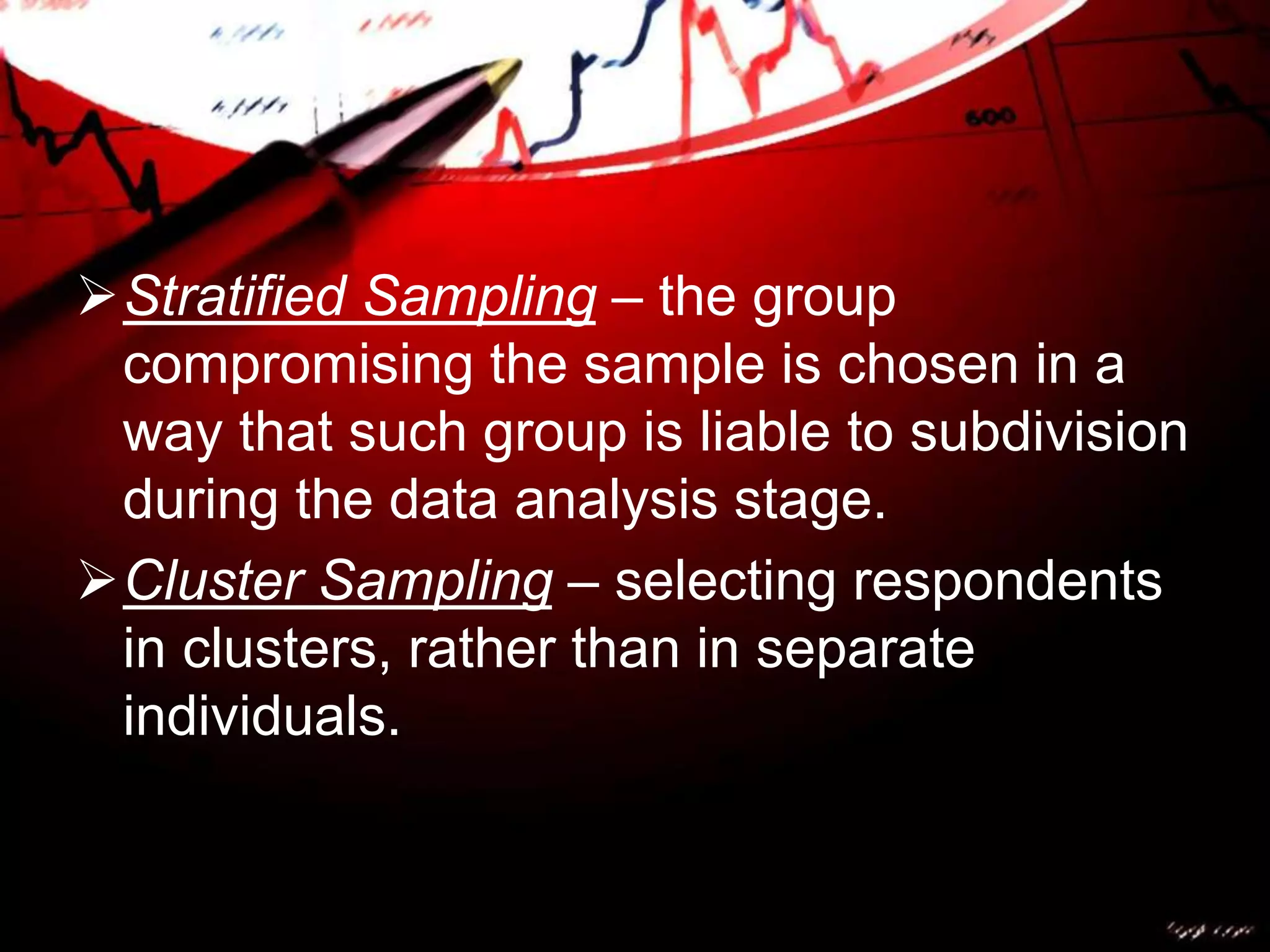This document discusses different methods for selecting participants in qualitative and quantitative research. It describes probability sampling, where every member of the population has an equal chance of being selected, and non-probability sampling, where selection is not random. Some common types of probability sampling mentioned are simple random sampling, systematic sampling, and stratified sampling. Examples of non-probability sampling include convenience sampling, quota sampling, and snowball sampling. The document emphasizes that the sampling method should be properly discussed and explained in research to select representative samples.











